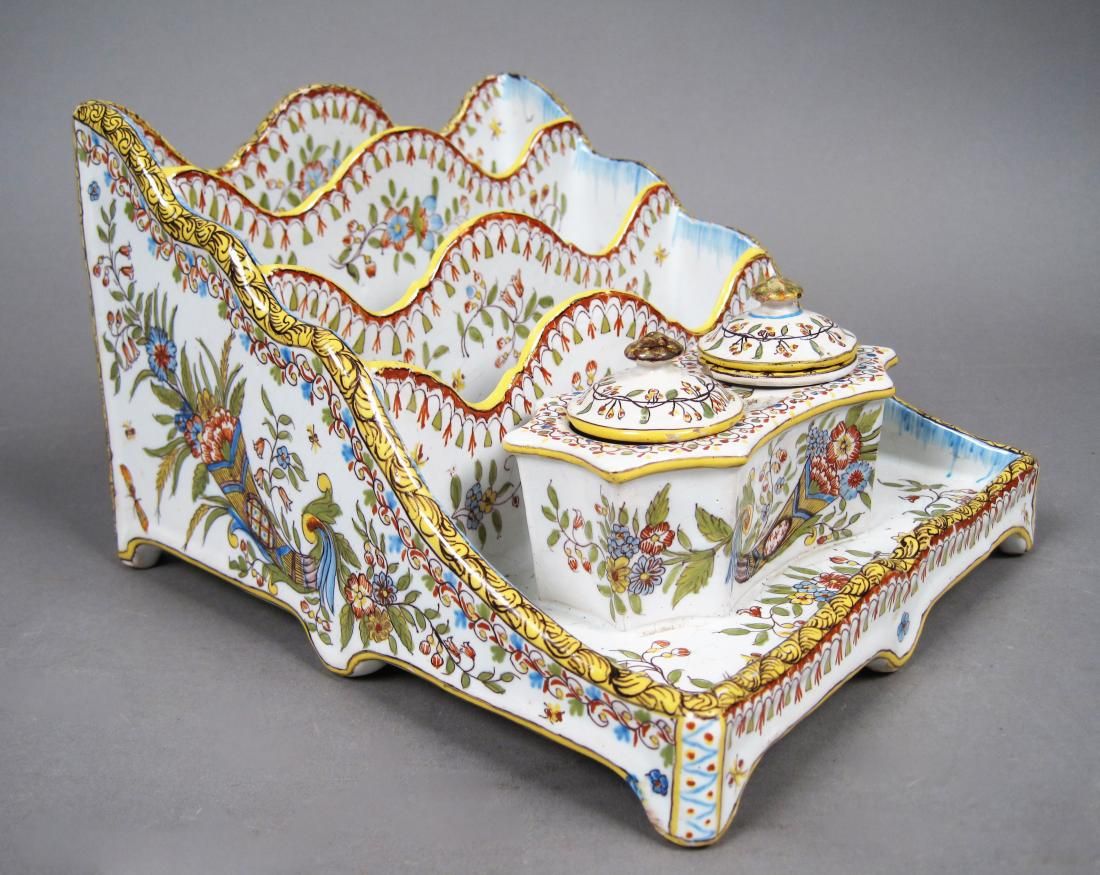
The Appeal of Antique European Faience
One of my favorite types of item that we see on a pretty regular basis is faience. This type of art pottery is wonderfully versatile in its decoration. The examples of antique faience expand to include 19th-century French household forms decorated with delicate floral designs—
—to the painted heraldic designs of 17th- and 18th-century continental European wares—
—to fabulously ornate sculptured figural forms.
Faience can be easily recognized by its bright white ground, which allowed artists to paint vibrantly colored designs, often using vivid shades of blue, yellow and red. One of the most interesting things about faience is that it was the culmination of thousands of years of the development and refinement of pottery techniques. The bright white color is caused by adding tin oxide to the glaze before firing, and requires a kiln able to fire the pottery at a very high temperatures. These technologies seem to have been developed first in the Middle East, and spread via trade routes to the western Mediterranean and to Italy and the rest of Europe. By the Renaissance, tin-glazed pottery had reached its peak in Italy; these antique Italian wares are generally known as Majolica and usually depicted historical and mythological scenes. Today, some of the most desirable pieces would be examples from the Renaissance era, large-scale apothecary jars and figural pieces from such famous designers as Emile Galle during the revival of faience techniques in the late 19th century. However, pieces of more charming, down-to-earth design can also be quite collectible.
The faience potteries of Quimper in the French province of Brittany produced household objects like platters, bottles, bowls, vases, etc., in a huge variety of forms ranging from the utilitarian to the fantastically unusual. The three major Quimper (pronounced Kemp-air) factories often decorated their wares with brightly colored scenes of Breton life. Male and female figures in traditional dress are usually surrounded by floral elements, or geometric patterns. A trip to Brittany wouldn’t have been complete without taking home a piece of the famed Quimper pottery. By the 1920s, Quimper art pottery was exported around the world.
There is an incredible variety of fine-quality faience out there. The technique has been used by artisans for hundreds of years to create beautiful works of decorative art in a huge range of decorative styles. It’s a category where there truly is something for everyone, whether your taste runs to the Italianate, the Art Nouveau or the charmingly naive.





